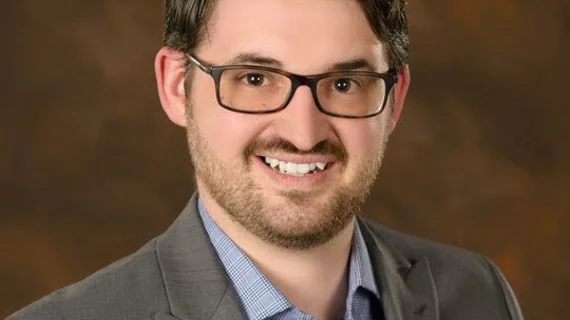In a California emergency room, a trauma patient in critical condition is wheeled in following a motorcycle accident. In Texas, a patient presenting with stroke-like symptoms is brought into the hospital by frantic family members.
Both patients need immediate care. Time is ticking away. Every second counts. It’s during moments like these that vRad’s emergency radiology care becomes so important.
“It is critical that we triage our stroke and trauma patients,” says Joe Schmugge, vRad’s vice president of operations. “We are dedicated to providing the fastest and most accurate care possible for our patients and our stroke and trauma protocols exemplify that commitment. Their lives are in our hands, and that’s a fact no one takes lightly.”
Emergency radiology has long been one of vRad’s areas of expertise—their radiologists completed more than 73,000 stroke protocol studies and 174,000 trauma protocol studies in 2017 alone—and it continues to be the company’s highest priority.
Consistently Fast for the Most Critical Cases, No Matter What
vRad takes pride in its ability to consistently keep stroke and trauma turnaround times fast, even in the face of numerous market challenges.
Imaging volumes are up and radiologist staffing continues to challenge imaging providers. As a bellwether for radiology, serving over 2,100 sites across the country, vRad quickly picks up on these trends. When clients grow, or have difficulty reading their local volume, they turn to vRad for help. 2018 is proving to be exceptional in this regard, with same site volume double in some cases. CT perfusion exams, for example, are on pace for a 200 percent increase in 2018.
Despite these pressures, average turnaround times for stroke and trauma studies remain consistent and fast.
vRad averages a turnaround time of 6.53 minutes for non-contrast head CT exams performed on stroke patients and 11.34 minutes for CT exams performed on trauma patients. These are eye-popping statistics, to be sure, but Schmugge says he and his colleagues are never satisfied and constantly strive for improvement.
So How Do They Do It?
The company’s team of approximately 500 radiologists, including 70+ neuroradiologists, provides interpretations to nearly 20 percent of certified stroke centers in the country, following vRad’s stroke protocol. Cases are assigned immediately to the best available radiologist, escalated to the top of their worklist, and the company’s “Auto-Dialing” phone system immediately places a call to the referring physician on record when there’s a critical finding.
“Our Auto-Dialer phone system is a game-changer for stroke care,” Schmugge says. “We’re really excited about it. When one of our radiologists sees a critical finding, they simply click a button and our system automatically places a call to that referring physician. Without doing one second of extra work, that radiologist is on their way to speaking directly to the physician so they can discuss the patient’s care.”
Schmugge notes that the Auto-Dialer system reduces conference call times significantly. In May 2017, a traditional call between the radiologist and referring physician was completed in 11.1 minutes on average from when the radiologist made the request to when the call was completed. With Auto-Dialer, the average time dropped to 6.1 minutes. Further, when the Direct Transfer feature is activated—a completely automated calling process that bypasses the Operations Center all together—the average time is reduced to just 3.8 minutes.
vRad’s stroke protocol also includes a new feature: Call on Open. This setting automatically alerts the radiologist that the referring physician would like a conference call as soon as the case is opened to help streamline patient care. If the call isn’t placed within a predetermined amount of time, the system will automatically initiate the call.
Schmugge says the company’s trauma protocol has also seen some big changes in recent years, further proof that vRad never stops working to improve its turnaround times and the quality of its interpretations. One significant update they made was unbundling trauma patient imaging exams – sending what are often full-body scans to multiple radiologists for swift triage versus a single radiologist working through the whole body on their own. vRad’s system automatically puts these urgent exams at the top of the worklist for all available radiologists, ensuring they get read as quickly as possible.
“Unbundling imaging for trauma patients made a huge difference,” Schmugge says. “And it shows why we’re never satisfied. By updating our trauma workflow, we were able to improve those turnaround times by 40 percent.”
Looking Ahead to the Future
It’s nearly impossible to discuss the future of any imaging policy without considering the influence and impact of artificial intelligence (AI), natural language processing (NLP) and other groundbreaking technologies. Schmugge notes that vRad is an industry leader in exploring the potential of these innovations, and he can’t wait for hospitals to see what they’ve been working on.
“As the largest teleradiology practice in the United States, we have the tools needed to get the most out of these technologies,” he says. “If AI or NLP can help radiologists and their patients in any meaningful way, we want to be the leader in making that a reality.”
vRad’s technical teams are hard at work teaching AI algorithms how to perform basic tasks that save their teleradiologists time and help ensure their turnaround times continue to get faster and faster as time goes on. And, Schmugge adds, the company’s efforts with NLP are going to make referring physicians happy in other ways.
“With NLP, we’re training computer programs to automatically format radiology reports exactly how the ordering physician wants them, and it adds no extra time to the interpretation,” Schmugge says. “It’s incredible to see it in action. Not only do we think we can produce the fastest average emergent turnaround times out there, but utilizing NLP means we can provide our findings in the most convenient way possible for the ordering physician.”

